
Login
X
- Home
- Courses
- Graduation
- Diploma Certificate
- Professional Diploma
- Special sessions / Aptitude boost up
- News & Events
- Student zone
- Placement
- Gallery
- FAQ
- Contact Us

You must be wondering how to become an interior designer? Suppose you plan to make your career in interior designing and need clarification about how it matches you and will offer good job options in the future. Here comes the right guide to help to know about an interior designing program and its career prospects.
Interior designing is the planning, designing, and implementation of architectural interiors. The interior space of a building must be designed by a professional interior designer who comprehends interior architecture. If you have the drive and imagination to design commercial and residential spaces, interior design is a great career choice. It offers a chance for a global career and the freedom to practice independently.
The best interior design schools in India provide thorough undergraduate and graduate interior design programs to those interested. Having the appropriate credentials in interior design could help you start a successful career. To obtain the necessary education, training, and abilities for the position, you can pursue a B.Sc. in Interior Designing as an undergraduate degree and then an M.Sc. in Design Space as a postgraduate degree. You can also look at some colleges’ interior design diploma programs. Even if you start your own interior design business, having legitimate credentials from one of India’s top interior design universities is always preferable. Your clients would feel more comfortable hiring you if you had these credentials when designing or renovating their space.
Numerous opportunities are available to candidates who have successfully attained the required qualifications in interior design. They are employable as lighting designers, aesthetic merchandisers, production designers, art directors, exhibition designers, and interior and spatial designers. Additionally, they can start their own interior design business and work with various clients. It is important for interior designers to stay up-to-date on the latest trends since the industry is highly competitive.
Woohoo!! Now you got an idea for how to become an interior designer? So, don’t wait!! Grab your seats from the top interior design college.
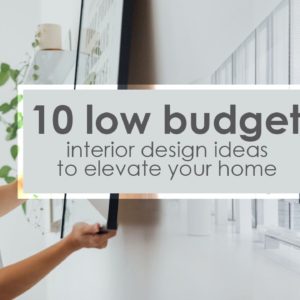
Low budget interior design that creates a well-put-out magazine-worthy home. Most people can’t afford to do the high-end interior décor. There are many ways to enhance and elevate your house in subtle ways without spending too much. Here are some easy and simple ways you can make your home more glamorous without denting your pockets.
Here are 10 low-budget interior design ideas for your home makeover.
Partitioning shelf is a great idea to gain division and privacy creatively. The shelves add additional storage space adding function as well as style the room. Books, vases, potted plants, models can be displayed and stored stylishly. It is a neat and tidy way to organize and display
Buying art can be expensive but art adds colour and beauty to the interior design. A simple and fun way to enhance the living room is doing a DIY art that you can later frame. Use the colours of the living room in the art to tie it all together and bring harmony to the space.
Upcycling furniture is a good way to reuse and reimagine old furniture. Adding funky mismatched-up cycled adds colour and life to space. It is environmentally friendly and budget-friendly. It can be done as an easy family DIY project over the weekend.
Mirrors are versatile and stylish. Adding mirrors to the wall mount is a good cheap way to enhance the interior design. Buying different shapes and sizes of mirrors and arranging them on the wall to give it an elegant stylish look.
Paper lampshades are cheap and convenient to use and buy. There are a lot of beautiful paper lampshades available in the market. The lamps are lightweight and easy to install. It adds attraction and unique touch to space.
Lifting the curtains all the way to the ceiling will give the room an illusion of added height. The high curtains give it a bigger and grandeur look. You can either opt to lift the existing curtain or add new curtains. Curtains are cheap and are readily available and in the market at different price points.
One easy way to remodel your kitchen without burning a hole in your pocket is by switching the colour of the kitchen cabinets. You can paint the cabinet to the colour of your choice and you can also replace the knobs of the cabinets to give it a fresher look. You can also do the same to your bedroom cabinets to change up your old bedroom to a new fresher one.
Under stair, shelves is a great storage idea. The otherwise left-out space can be used by creating a customized shelve space for storage and display. It is both stylish and functional.
Don’t be shy and add a bold coloured wall to your interior design. The bold coloured wall can be used as a backdrop and add accessories to the room that match the wall colour. You can also add texture or pattern to the wall. This can be either a DIY project or you can consult a professional for it.
Candles and flowers bring freshness and beauty to space. It can be arranged almost anywhere in the house. You can arrange flowers in the bathroom to give a fresh and expensive spa-like feel to it. It will also give a pleasant smell enhancing the whole experience.
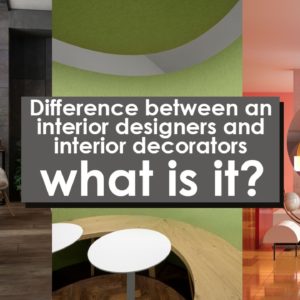
The difference between an interior designer and an interior decorator is not well known. Even though there are similarities between them, they are different careers. People often mistake interior decorators and interior designers. Here are some similarities and differences between interior designers and interior decorators.
Interior designers are mostly professionals with a degree or diploma in interior designing. There are different ways one can become an interior designer. Interior designers should how the architecture and the built of the space. They use a mixture of science and art to create a perfect interior design. They work alongside the architects to create functional and beautiful living spaces. The experts in the field of interior design must have a firm grasp on building construction. They strive to create optimal functioning spaces with cost-effective methods.
Interior decorators mainly focus on enhancing the aesthetics of the living space. As the word ‘decorate’ indicates they nicely decorate the given space. They may redo or rearrange the wallpapers, paint color, and furniture of the interior. Interior decorators do not have to hold any relevant degree. They are mostly people with good artistic creativity and a knack for décor. They work within the framework of the space and its functionality. To change the aesthetics of the space they make use of fabric, paint, furnishing, and accessories.
Both of them are hired by the owner, architect, or developer. Before they begin, interior designers meet with the client to understand how space will be utilized. Interior designers while creating a plan focus on things like building fire safety, accessibility, efficiency, and functionality. They also keep sound and acoustics in mind. Creating the plan for the walls and floors requires architectural base knowledge. They make use of science to create optimal results. The total budget is estimated during the planning phase
On the other hand interior decorators while planning and designing keep in mind only things of aesthetic value like flooring, furnishing, lighting, fixtures, accessories, fabric, paint, and art. Interior designers work on both commercial and residential levels while decorators largely work on the residential level.
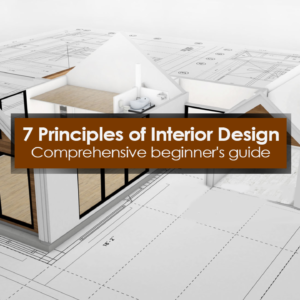
7 principles of interior design are widely accepted by everyone in the industry. It is tried and true recipe to create interior spaces that are functional and aesthetically pleasing at the same time. Like the golden ratio in architecture the 7 principles also enhance and elevate the interior design.
Let’s dive deeper and get to know all seven principles of interior design.
The first thing to keep in mind is balance. What is balance in terms of interior designing? It is referred to as “visual weight” distribution. “Visual weight” refers to how heavy or how light an object appears to the human eye. Large, solid, dark, or colorful seems heavier to the eye than small, thin, open, or light objects seem lighter to the eye.
A good way to ensure that the visual weight distribution is good is by dividing the space into 4 quadrants and each quadrant should contain roughly the same amount of furnishing.
Like the music, repetition helps in visual appeal too. Just as creating musical patterns creating a visual pattern is necessary for interior designing. It creates a space that is cohesive and gives a seamless moment to the eye to flow around the room. The element for repetition can be anything from texture, shape, pattern to finished materials.
Try to create a focal point. It can be something inbuilt like a fireplace or something that is deliberately placed in a way like a piece of art or furniture. Lay the design around the focal point such that it is the first thing someone will notice when entering the room.
To make sure the interior is not boring contrast and variety, to say the least, is a must. Additionally, contrast gives the space drama and variety adds diversity and personality. You can achieve it by pairing contrasting colors, shapes, and textures
Scale and proportion will ensure that objects in the room belong and relate to each other. Proportion refers to the size of one object concerning another while Scale refers to the size of objects within a space.
Unity and harmony ensure that everything goes with everything else in the room. It is achieved when the design and furniture follow the theme. Decorating accordingly with items that have common colors, patterns, shape, or style will help to achieve unity and harmony

Interior design course details on frequently asked questions are given below. Please refer to the below questions. for more details contact us at 0495 2722242
BSc interior designing is a three-year course that equips aspiring interior designers with the necessary skills needed for it. In the three years of the course, several core topics about Interior designing are addressed, practical’s an internship. Interior designing is not just artistic talent, the process of interior designing involves scientific, logical, and creative thinking.
Communication Skills
Basics of Interior Design
Environmental Studies
Cost Estimation
Construction Technology
Materials and Finishes
Colour Theory and Techniques
Design Theory
Materials and Finishes
Colour Theory and Techniques
Design Theory
Material Purchase
Furniture Design
Model Making
Design Technology
Drawing (Technical)
Design Practice
There are a variety of different job opportunities here is a list of few
Product Designer
Furniture Designer
User Experience Designer
Interior Designer
Set Designer
Interior Elements Advisor
Interior Space Consultant
Model Maker
Portfolio Designer
Blogger
Interior Decorators
Bathroom Designers
Universal Designers
Sustainable Designers
Industrial Designers
Professor of Interior Design
Exhibition Designer
Kitchen Designer
Healthcare Designer
Corporate Designer
Lighting Designer
Architectural Technologist
Production Designer.
BSc Interior design (by Barathiyar University)
Interior designing is a multi-faceted profession which includes numerous element that needs to work together.
First and foremost is research and analysis of the client’s goals. Sit with the client to understand their wants and needs also their likes and dislikes. Form schemas and plans with the help of two and three-dimensional design concepts that integrate knowledge, creativity, principles of interior design, and client needs. Then comes the selection process which includes finding furniture, fixtures, and equipment. Creating layout drawing, detailed product description, provision of contract documentation to facilitate pricing, procurement, and installation of furniture. Preparation of construction documents, consisting of plans, elevations, materials and finishes details and specifications, power and communications locations; reflected ceiling plans and lighting designs; and furniture layout. Collaborating and coordinating with various allied professions for plumping, electrical wiring, etc. Observing and reporting while the project is in progress till completion.

Multimedia and its applications are vast and varying . There are a plethora of definitions of the word multimedia. It is roughly defined as a computer-controlled integration of text, audio, video, animation, and any other media that is stored digitally, signified, and transmitted. Multimedia and its application are an integral part of day-to-day modern life.
Multimedia can be both linear and nonlinear. The direct active context that requires no navigation or interaction control is linear multimedia. Movies are a good example of linear multimedia. Non-linear content is also known as hypermedia content uses interactive navigation control. Games use non-linear content to provide user interface and navigation.
for multimedia and its applications different elements play a vital role.
The most basic and well-known form of multimedia is text. It is the foundation for word processing programs, it is still the fundamental form of information used widely in multimedia programs. Text can be customized according to size, font, and color. It is one type of application people use every day to communicate.
Audio is an effective multimedia application. Select types of information can only be conveyed only through sound. Audio sound helps strengthen the viewer’s consideration of the information and helps generate a positive impact more than any other medium of multimedia. The versatile nature helps capture the user’s attention and makes it more interesting.
An image is worth a thousand words’ true to this proverb still graphic image conveys the information across efficiently. images enhance the multimedia appeal.
Animation is essentially moving graphics images. An animation of someone performing a medical surgery is much easier to understand than text or images. Animations make it easier for the creator to express the information.
Full motion video adds to the multimedia application positively. Even though, the full-motion video is space consuming and lowering the video quality will affect the impact it creates. it is a very popular method of multimedia. It provides realism to the multimedia that most other elements can’t provide. There are several ways to compress the videos to reduce the bulk and storage space.
It provides a wide range of creative applications for information communication.
It caters to all types of people.
Most multimedia only require a one-time purchase of a device making it cost-effective in the long run.
It provides a more realistic approach to learning
Current culture integrates multimedia in all areas of life. Making it the most trending form of communication.
The deceives need electricity to operate. Most rural areas lack the basic requirement necessary for multimedia propagation.
It may take away from the important information due to its attention-grabbing nature.
Compared to traditional mediums of information multimedia production is costly.
Creating multimedia requires more time because of its creative nature.
Multimedia mastery requires a significant amount of time and energy because it is complex and involves a number of elements
Multimedia is vulnerable because the devices involved can be easily broken or tarnished. Additionally, most devices are not waterproof making them fragile. Some damages are repairable while others are not adding to global pollution.
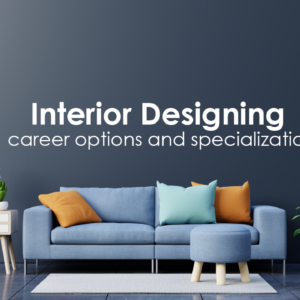
Interior designing career options seem to be not many but, it is not true. In India, there is a demand for more than 1 lakh interior designers in different for different specialization. The common misconception that interior designing as a career only entails the job of designing living spaces.
There are numerous interior designing career options for interior designing graduates. Below is a list of fun and creative job titles after graduation.
If you have a strong inclination towards tasteful furniture that enhances the commercial or personal living spaces this is the job for you! Your job is to create modern furniture that is both stylish and functional.
Most of the world is not aware of this job title. In fact, it is one of many jobs that are not well known to the public. The job is to create temporary fixtures and display stand for art galleries, museums, large public exhibitions, conferences, trade show, and businesses.
Demand for a stylish, personalized, and functional kitchen for commercial and personal spaces. Hence, the job entitles creating, updating, and remodeling the kitchen area. You will have to regularly meet with the clients to discuss building materials, themes, room layout, colors, and patterns and embody their dreams into reality.
This is one of the fanciest and high fame job titles. Production designers are responsible for the visual concepts of television, theatre or film sets. They are in charge of creating a set with props, location, and graphics, lighting, costume, and camera angle therefore, the job is a very demanding high reward type of career. Also, every set and production is unique and each location/scene has its challenges.
The job is to provide building designing service, train in architectural technology and builds technical design and construction. They work alongside architects to produce compelling unique commercial spaces.
Tricky but well rewarding job. Universal designs are designs that take into consideration of people with a wide range of difficulties and accommodate all people. Universal designs can help people with disabilities to access and utilize public spaces that would otherwise be difficult to use.
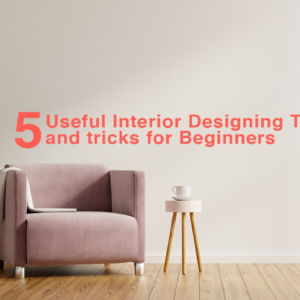
These interior designing tips and tricks can help you redesign your living space. Here are some interior designing tips that will guide you to accomplish that. A well-made interior design is a statement. It reflects your personal style and taste. As an amateur decorating, furnishing, lighting, and accessorizing may seem hard and confusing. But if you have a good imagination and a style on your mind the task can be accomplished with the help of these tips
If you are someone with a zest for redecorating and designing interior spaces consider taking up interior designing as a career. There are many degrees, diplomas, and certification courses available. Interior designing as a career offers a wide variety of jobs.
Some of the major interior designing tips to keep in mind are
Before trying to redo your living space make sure to pick a style and stick to it. To make the interior more appealing stick to a style and make sure you fit your furniture, accessories, art, wallpaper, lighting, etc fit with the theme.
Lighting is quintessential to any space. One way to make sure the room has good lighting is by observing how natural sunlight falls in the place. If there are places where there is no or weak natural lighting consider placing lights there. Go with lighting that fits your preferred interior style.
One tip is not to purchase furniture that comes in a set. A little bit of variation will add more soul to space. Don’t overspend on the furniture that will leave you with little money for the rest of the things.
In small spaces go bold in colour and style in terms of the wall colour. Make sure not to pick paint before you settle on a style. Only choose a colour when the theme is finalized.
A good way to elevate the floor without redoing the entire floor is by adding rugs and carpets that bring life by adding colour, texture, and warmth to the place. Keep in mind to add cheap and durable rugs in high use/traffic common areas and luxuries more expensive carpets/ rugs
These might seem like unnecessary spending but, trust us accent piece and accessories goes a long way. For example, if you are a big beach fan incorporate elements from it like seashells in a jar for display.
If done right it can add a personal touch without being overwhelming. It ties everything together creating harmony among different elements.
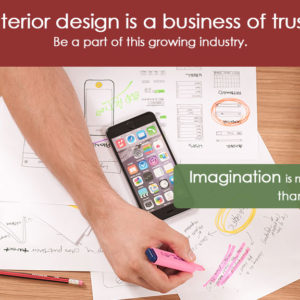
BSc Interior Designing syllabus and eligibility vary across various universities but the core subject and minimum eligibility are almost homogeneous across all universities. After completing 12th-grade students are often confused when choosing a career path. Questions like which stream to pick, which careers will be optimal plague their minds. If you are artistically gifted and have a keen eye to furnish and create aesthetically pleasing environments you might have already thought of interior designing as a career path. given below are the detailed BSc Interior designing syllabus and eligibility of Bharathiar University.
Minimum eligibility for BSc Interior designing is 12th graduation. also, lateral entry to second-year is possible for students who completed a one-year diploma in interior design.
The university follows yearly examination as opposed to semester-wise that most other university structure and courses.
FIRST YEAR
|
Year |
Part |
Subject and paper |
University Exam. | |||
| Duration in Hours | Max. Marks | |||||
|
First |
I | Language | Paper 1 | Language-I (Optional language) | 3 | 100 |
| II | English | Paper 1 | English (Communication skills) | 3 | 100 | |
|
III |
Core |
Practical 1 | Interior Design – I | 3 | 100 | |
| Practical 2 | Interior Graphics – I | 3 | 100 | |||
| Theory 1 | Materials of Interiors – I | 3 | 75 | |||
| Practical 3 | Presentation Technique | 3 | 75 | |||
| 3 Theory and 3 Practical | Total Marks | 550 | ||||
SCHEME OF EXAMINATIONS
|
Year |
Part |
Subject and paper |
University Exam. | |||
| Duration in Hours | Max. Marks | |||||
|
second |
III |
core |
Practical 4 | Interior Design – II | 3 | 100 |
| Practical 5 | Interior Graphics – II | 3 | 100 | |||
| Practical 6 | Furniture Design | 3 | 100 | |||
| Theory 2 | Materials of Interiors – II | 3 | 75 | |||
| Practical 7 | Computer Application in Design – I | 3 | 100 | |||
| Theory 3 | Estimation and Costing in Interiors | 3 | 75 | |||
| 2 Theory and 4 Practical | Total Marks | 550 | ||||
SCHEME OF EXAMINATIONS
|
Year |
Part |
Subject and paper |
University Exam. | |||
| Duration in Hours | Max. Marks | |||||
|
third |
III |
core |
100 | Interior Design – III | 3 | 100 |
| 75 | Landscape and Environmental
Design |
3 | 100 | |||
| 75 | Professional Practice and
Management |
3 | 100 | |||
| 100 | Scheme Detailing (Working
Drawing) |
3 | 75 | |||
| 100 | Computer Application in Design – II | 3 | 100 | |||
| 150 | Office Training (Internship) | 3 | 75 | |||
| 2 Theory, 3 Practical,
1 Project |
Total Marks | 600 | ||||
The three-year BSc interior designing focus on various core aspects of interior designing. There are several job opportunities waiting for students who graduate. The rise in urbanization and population made sustainable interior spaces in high demand.

Interior designing is a sort-after career choice that is exclusively for the candidate who wants to have creative liberty. It combines mathematics and arts to create visual harmony and peace. Therefore, some colleges fall under the top 10 interior designing colleges in Kerala and some don’t.
The evaluation is based on
Higher the number of applications and lower the number of seats. hence, Some colleges conduct entrance tests where thousands of students compete for a limited number of seats.
Renowned and well-known faculty with experience and qualifications beyond just teaching. Besides that Some faculty and staff members are well known of top colleges same goes for the alumni. If the students who passed out to become major sharks of the industry, dominating the field. It gives off a well-round reputation for the college or department.
One of the major contributors to being on the list of top 10 colleges in Kerala is affiliation and certification. furthermore, The value of the University the college is associated with is used to determining whether the college goes under the list. Which will ultimately determine the value of your certificate of education.
How equipped the college is in terms of facilitating the course/degree offers makes a huge difference in the ranking of the college. For Interior designing other than just classroom learning to develop the students in creative ways well-equipped studio, laboratory with software such as 3DS Max, Ravit, Sketch-up, etc are necessary. Other extra-curricular activities like expert sessions, site visits, and industrial visits could determine the quality of education provided.
Vismayam College of arts and media falls under one of the top 10 colleges. More than a decade of devotion to perfect the art of teaching. Dedicated faculty and well-equipped studio and facilities for interior designing students. graduates get placement in various firms aided by the college’s placement team.

Best interior designing colleges can be hard to choose, researching and gathering details about them need great precision. For some of us creating an aesthetic landscape is a passion but, passion alone can’t make a career. To transform a passion into a profession needs a great deal of planning also a great deal of creativity.
Interior designing is an artistic job. There should be a streak of imagination to transform empty spaces and bland walls into tasteful lively spaces. Here are 3 things to keep in mind while choosing the best interior design college to kick start your career in the industry.
One of the criteria that all the best interior design colleges have in common is reputation also these colleges are often competitive in terms of admission. A college with a good reputation will do wonders for your career. Make sure to choose an option with strong alumni who went on to be successful. There are many colleges with a good reputation but don’t let it fool you, be specific and confirm that the college has a good reputation for the interior designing department.
How relevant is the course offered? Make sure to do your research thoroughly. A few ways to narrow your options are to choose a college that provides an updated syllabus for learning. Make sure the software used is relevant in the real-world working environment.
How valuable your is degree certificate? There are hundreds of degrees and diplomas available to pursue for varying durations of time with different syllabus and projects. Ensure that major companies in the industry accept and recognizes the degree college provides.
Vismayam College of arts and media is one of the best interior designing colleges in Calicut it is the result of reputation that is stemmed from more than a decade of successful output. Get a detailed syllabus and course structure to make your rightful choice.
Suggested readings for you..

If interior design has always fascinated you, then you should definitely explore career scope in interior design. The aim is
to become a successful interior designer who is skilled in all aspects of designing, be it space planning, furniture
designing, lighting, landscaping, applying fabric finishes or any other design branch. So the big question is-what are the
areas that have to be extensively understood to start working as an interior designer? Read on.
It remains an effective tool to convey ideas. Freehand sketches, proportional drawings, measured
drawings, projections; rendered illustrations- the category is specifically aimed at making you perfect in
conveying your designs to both laymen as well as professionals. Be it furniture, furnishings or views, graphics
help you in effective visual communication.
Design and architecture are constantly evolving. Naturally, one should be well informed about
existing and useful materials when it comes to construction and design of buildings, furniture and other
elements. A thorough knowledge of materials includes information regarding suitable as well as avoidable
materials according to the local climate of an area. Apart from improving efficient designing, the knowledge of
materials is very important in economizing the total designing process and making the project cost efficient.
Design is everywhere, literally. With increasing emphasis on environment, a designer these days
is expected to apply his/her skills not only to the house, but to its surroundings as well. Shrinking spaces have
led to the popularity of interior landscapes as well, such as courtyards and water bodies.
4. FABRICS. Interior fabrics such as carpets, curtains, upholsteries, bed spreads, table linen, kitchen linen to name
a few, add that hint of comfort and supple finish to a well defined interior. One should be aware of the vast
collection of soft furnishings available in the market these days, their uses, advantages and disadvantagesbefore they are applied to an interior.
What makes an interior attractive? The answer to this question forms the content to be learned in
aesthetics. Apart from effective arrangement of individual interior pieces, it is equally important to understand
the design secrets that add the Midas touch. A successful interior is the result of strategic application of design
principles and elements.
Each member of a family has his/her own choice when it comes to design and color. A clever designer is
successful in making the best of all selections and creating interiors that please the whole family. What comes
handy in that situation? A thorough understanding of colors. The right type of color in the right amount results
in the right outcome.
Some designers have keen interest in taking residential projects, others focus on
commercial sectors. When an interior design student is ready to begin his/her practice, they tend to have a fair
idea about their preferred areas. A multitude of specialties exist, such as kitchen design, product design,
furniture design, color consultancy, lighting and so on.
A building needs some essential services such as plumbing, fire and safety, adequate
heating and ventilation and electricity and interior designers make sure that all required services are
incorporated in a structure at the planning stage itself.
It is not just about Vastu or Feng Shui. Space planning requires in-depth knowledge regarding
building laws, bye- laws and related legal insights. It not only saves time in the planning stage itself, but it also
eases out many steps during construction period for both the client and the designer.
Depending on what course you select, you might learn some more or may superficially cover a particular topic during
course duration. The happy news is, learning does not have an expiry date! Armed with a strong theoretical and practical
base, you can make it big with time, perseverance and experience in the field of interior designing

Beautiful spaces need careful planning and fruitful teamwork. Be it any type of space, designers definitely add value to the overall end use and looks of it. So, getting them on board is absolutely sensible. But, should you approach an interior design company or should you seek a freelancer?
While there is no doubt that these services may add to your expenses, however, they cut down both short term and long term liabilities. Here, the real work is to sort out the exact interior design company that will suit your project. Or, if it makes sense, a freelancer. But how do you decide on it?
While a freelancer may be more open to financial negotiation, a design firm may render a more professional service. Now, if you look at the current design industry, there is plenty of work for both freelancers and firms. Both are busy with their respective shares of projects.
For a better understanding, let us talk about an interior design company first. Well, a company has employees and employees need salaries. Add to that, the overheads of running the firm. Yes, such firms need sizable projects to sustain their livelihood. Having a fleet of trained workers and teams cuts down the working time considerably. Which proves more beneficial to the client that the firm charges. You see, time is money.
Then, the fact that they establish a work flow, reduces distractions and confusions, which again fastens the whole design process.
On the other hand, a freelancer is mostly a beginner or someone who works more for the sake of passion. If we talk about a beginner, this designer probably has an internship experience and now wants to self- evaluate. That evaluation may be in terms of creativity, supervision, time management and material management. Generally, internships prepare these designers with the typical work flow a project may demand. Hence, many skilled designers indulge in this practice.
With freelancers, you have a bigger bracket of bargaining and more flexible method of working. Often, the client and the freelancer spend a lot of professional time together. This way, a lot of discussion goes into the details of the project. Of course, freelancers also have their own teams of workers. Naturally, the interactions are more one-to-one than those with a typical interior design company.
Working with an established firm gives you many perks.
With freelancers, you get to experience different advantages.
Be it a house or an office, ultimately, useful design is the product of hard work and talent.
It is this very reason that you see many freelancers in design field. With their talent, perseverance and passion, they keep completing projects to their clients’ satisfaction. And most of the times, they source their works from mouth- to- mouth publicity.
On the other hand, when you entrust your project to an interior design company, the whole procedure becomes a cakewalk. Since they are already familiar with foolproof methods and techniques, You can literally throw away your worries and be a spectator to the progress of work.
There is no hard and fast rule regarding which project for whom. All types of designers can indulge in all types of project. Here, the only things that matter are their creativity and talent in making your design concept come to life.

If you have a creative side, then you can actually explore your potential. Even though art has many forms, making a career out of one is equally exciting! And with Interior Design, it only gets better. But, how do you decide the best interior design college for you?
Don’t worry, this blog takes you through a few points that you may look up before zeroing down to a college of your choice.
When it comes to making a checklist about picking a college of your choice, it absolutely makes sense to consider many factors individually and together. One particular college may be average in one aspect but strong in another. So, after considering everything, go for the one that suits you the best.
Here are a few pointers that will help you with shortlisting a good interior design college.
When you wish to study a subject of your choice, it is only natural that you get guidance from someone who masters it. Before you join a college, it makes sense to know the feedback and quality of the teaching faculty. An interior design college makes sure to enrol productive people on board. And their quality speaks in terms of students’ feedbacks and years of experience in teaching.
After all, teaching is not everybody’s forte!
Take any educational institute. For all its programs, the institute should fulfil certain official requirements that meet course standards and make students eligible for placements. If it is a degree program, the interior design college should affiliate it with a recognized university.
However, in the case of Diploma courses, a college may or may not affiliate itself to a university. Rather, many established and leading colleges run their own Diploma courses. After all, they have years of expertise to back these.
These are some very important aspects of any creative course- seminars, workshops and similar activities. For any interior design college, these activities form the very offerings for the professional grooming of students. When we talk of activities, we are talking about involving students in all possible art episodes around the institute, say an arts fest or a creative meet.
With workshops, the college demonstrates the importance of learning by doing. And seminars/presentations open up a lot of opportunities for the students. More so, when you have industry stalwarts engaging in meaningful activities and conversations with students.
Since interior design is a professional course, many interior design colleges tend to have a tie-up with architecture and design firms for their graduates/diploma- holders. Now the important point to consider here is- the placement record of students.
Instead of mere tie-ups, a good interior design college has a good placement record. In fact, the placement cells of such colleges start training their outgoing batches through various sessions and workshops, for a quality career launch.
After all, a career support right when you graduate gives you a sense of direction and a path to continue on to.
Interior designers know the value of teamwork. Be it on the site, over the drafting table or in the office, teamwork makes or breaks a project. Here, you not only need to have the knowledge, but also professional and time management skills. While your portfolio may be excellent, it will not cover up for your lack of interview skills. Even if you can converse fluently, you cannot substitute drafting skills with it.
And that is why it is important to keep a track of what all your favourite college offers in terms of real-life skills. There are many finer details that make a big picture perfect. But without those details, the same picture may turn out to be a less- than- a mediocre piece of art. And the same concept applies to your career also. No matter how much you learn, without the right ways of expressions and skills, all these may fall flat.
A good interior design college can be the very factor that may add great value to your career. Hence, whenever you choose, choose it wisely.
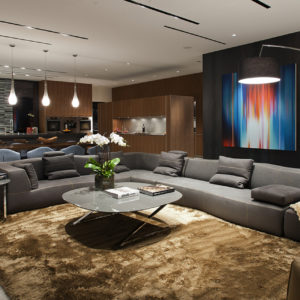
Your home speaks volumes about the person you are. When you decorate your house, you actually make your design statement. Moreover, when you design your house cleverly, your daily routines improves for the better. Now if you think you don’t have the skills, don’t worry. Like the saying goes, stay calm and hire an Interior designer!
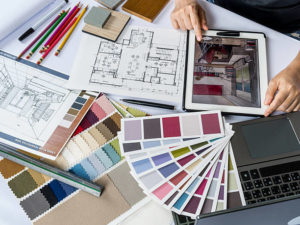
Yes, hiring means paying a service fee. But is it worth the effort? This blog lists down 10 benefits of hiring an Interior Designer.
That precious dream house of yours will definitely improve if a designer plans it. That is because they specialize in creating such spaces. So, you may forget a tiny but important detail while making your plan but they won’t,for sure.

Designers know how to work within a budget. Well, as a first experience, it may prove to be quite overwhelming- designing your house from scratch. But a designer can save your time and money since that’s what they learn and practice. Co-operate with your Interior Designer and see how it works like magic. Also, another misconception is that designers work on big projects only. You should know that a successful designer gets the job done in ANY budget- big or small.
Worried about from where to source that beautiful carpet you spotted elsewhere? Or are you getting confused by the minute about deciding on a flooring option? Here comes a designer to your rescue. A seasoned designer knows which design and material will suit best. He/she has a working relationship with the local markets,suppliers and dealers. In fact, they often crack super saver deals for their clients.

When you decide to renovate or design your interiors, you will either be browsing internet or going through design magazines for “inspiration”. Now, wouldn’t it be way better if your house showcases original creative designs? So, let your Interior designer do that bit.
The living rooms, bedrooms and other spaces in your homes are the evolved answers to man’s spatial needs. Hence, it is always better to customize spaces depending on the families/people who use it. And this is something in which interior designers are experts at. Thus, a cleverly designed interior makes full use of available space to the best functions of the family members.
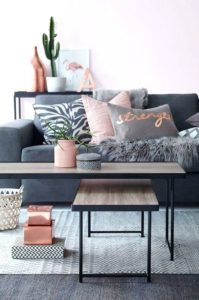
An interior designer may surprise you with the amount of general awareness they have regarding the latest trending style and design elements. Of course, that’s their job. So if you happen to prefer only the latest for your interiors, then a designer is the right person for the best possible looks and feel.
Work on a project with an interior designer to know what you were missing in your own home sweet home! There may be numerous details which you were never aware of before. In fact, some people come to know about the different expectations their own family members have, when they start discussing it with their designers.
Not hiring a designer while designing your house is actually becoming penny-wise and pound-foolish! For a work that can be done in three straight months at the most with the help of a designer, you tend to add months and days to avoid a nominal fee. And so, when you tally, you happen to incur far more losses in terms of time and money when compared to getting the job done by a designer.
Ultimately, it is your personal choice whether or not to hire a designer. We hope the above points help you in taking a sound decision when you contemplate redoing your own abode!
Phone: 0495 272 2242